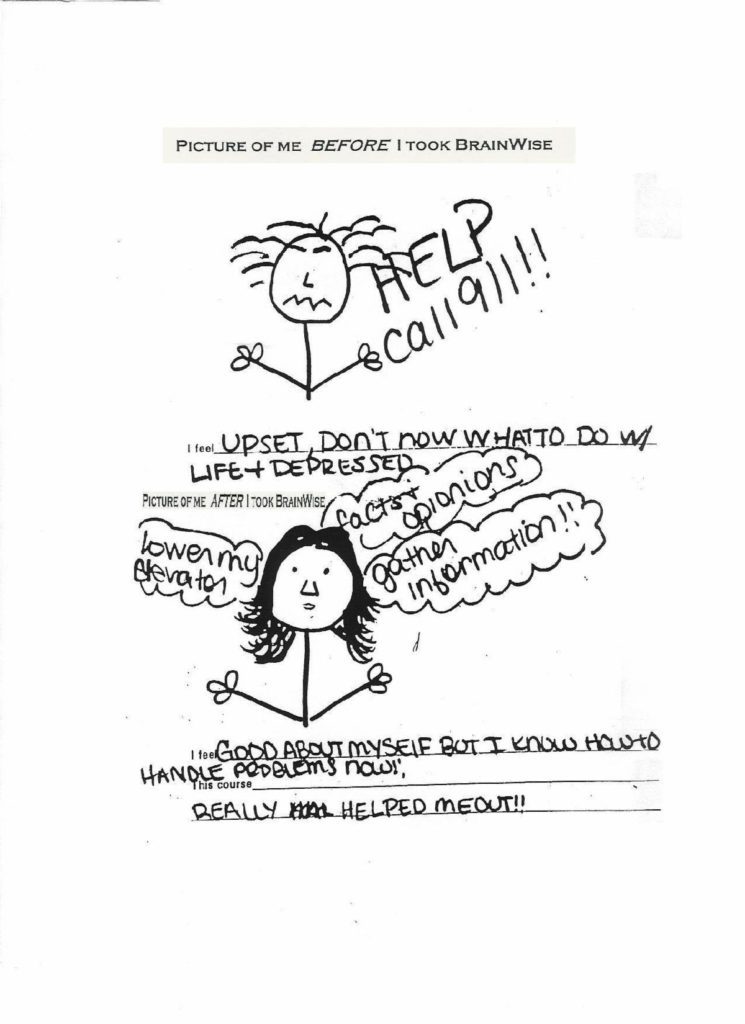Scientific Measures of Storytelling May Offer Research Opportunities for BrainWise
Posted On: July 8, 2021Storytelling has long been used as a teaching tool, but the outcomes have been difficult to measure. A new study shares an evaluation method that validates results and could be applied to future BrainWise research. Scientists used psychophysiological (mind/body) measures to study the effect of storytelling and riddle-based games on children hospitalized in intensive care units. The scientists found that reading stories increased oxytocin, or “feel-good” hormones, and decreased cortisol stress hormones. The combination of increased oxytocin and decreased cortisol helped children in the “Storytelling” group register a decline in their postintervention pain sensation at a rate twice as large as those in the “Riddle” group.

Lead author and neuroscientist Guilherme Brockington noted that storytelling programs are in hospitals all over the world, but relatively little scientific research has examined possible psychological mechanisms behind their effects, leaving the mainly anecdotal outcomes difficult to interpret and confirm.
The study, published in the Proceedings of the National Academy of Sciences, discusses the design they used. Researchers collected saliva samples before and after the interventions from 81 seven-year-old participants to measure their oxytocin and cortisol levels. The children also completed a pain survey before and after each activity, rating pain on a scale of 1 to 6.
A third measure asked the children to describe their impressions when shown cards depicting a nurse, doctor, patient, medicine, hospital, pain, and a book. Jorge Moll, MD, PhD, one of the co-authors of the study said, “Until now, the positive evidence for storytelling was based on ‘common sense’ and taken at face value. He said that he considers this study “to be one of the most important I have participated in.” Moll sees a wider applicability for the study in the future. “It can potentially be implemented in the entire public system once larger-scale studies verify its reproducibility and effectiveness.” These results could potentially benefit BrainWise.

BrainWise Implications: Stories as Reinforcement; Biomarkers as Outcome Measures
First, the hospital study elevated storytelling from anecdotal reports to results proven with scientific evidence. BrainWise instructors – educators, parents, caregivers, therapists, health professionals – use stories from books, animations, videos, or other resources to reinforce the 10 Wise Ways. The stories can be chosen by the instructor, the child, a teen or an adult. The instructors ask questions and guide BrainWise graduates to apply the ten thinking skills to problems characters face in stories. Children’s stories can cover any subject, including mental health, health care, safety, and relationships. Youth willingly engage in popular Young Adult (YA) stories, and both youth and adults analyze popular movies. Graduates of all ages and abilities discuss problems and assess the characters actions in terms of using Wizard Brain thinking of Lizard Brain reacting. They identify specific thinking skills the characters could use to prevent problems or manage them.



Fourth Graders Use the 10 Wise Ways to Identify the Behaviors of Characters in Stories Teenagers chose the stories and read them to children. The classroom teacher guided the questions asked the children.
Another anecdotal outcome BrainWise uses asks teen graduates to draw pictures of themselves before and after BrainWise. In the examples below, students completed both the BEFORE picture and AFTER picture at the end of the course. Many of the drawings include statements that describe how BrainWise helped them gain control of their feelings, stop fighting, decreased suicidal thoughts, made them feel happy, led them have more friends, and helped them care about others.
Drawings and comments made by two students after they completed the BrainWise course.


The storytelling examples and drawings demonstrate how the children and teens use the 10 Wise Ways to describe emotions and behaviors. Here is a link to additional drawings.
Second, the study offers BrainWise a scientific means to measure outcomes using oxytocin and cortisol hormone levels. Saliva samples, obtained using mouth swabs, add an important biological component to the current psychometric measures and anecdotal information used for evidence.
Lastly, hormonal measures provide a possible way to examine the long-term impact of BrainWise. The hospital study found that 30 minutes of reading produced short-term increases in oxytocin and decreases in cortisol. Although temporary, the effect showed a reduction in fear and improved psychological health in hospitalized children.
BrainWise is intended to produce a long-term effect. Instructors teach the ten lessons by using age-appropriate and topic-sensitive examples customized for the participants. Just as the alphabet is the foundation for learning to read, the BrainWise program’s 10 Wise Ways are a foundation that teaches people to stop and think. A possible strategy might be to collect oxytocin and cortisol measures in individuals who have learned BrainWise and compare them with matched groups who have not learned BrainWise. There are many populations on which this research could be done.
The research on storytelling is important. Stories have been used as BrainWise teaching aids since the program’s inception. Several years ago, I observed a five-year-old using BrainWise to explain the fox’s behavior in the story of the Gingerbread Boy. The Gingerbread Boy had successfully run away from the pursuers who want to eat him when he agreed to hop on the back of a fox in order to cross a river. As the water gets deeper, the Gingerbread Boy is forced to move to the top of the fox’s head and the fox eats him. When the teacher asked the class, “What Wise Ways do you see?” a child responded, “The fox used his Wizard Brain to trick the Gingerbread Boy to ride on his back and used his Lizard Brain to eat him.”
Using a combination of BrainWise and storytelling can make a powerful impact on emotions and behaviors. This methodology can be a powerful tool to help people address problems. A heartfelt thank you to Dr. Brockington and his team for sharing their important work and helping validate interventions that improve lives.